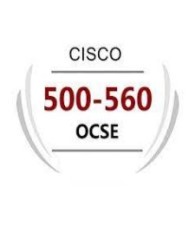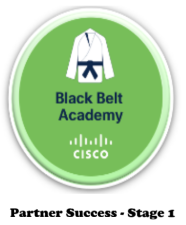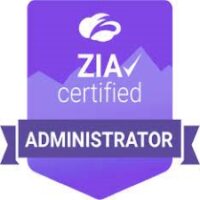Celebrating Early in Career Talent on National Intern Day – Securing a Great Career Dena Konkel on July 27, 2023 at 7:37 pm
Across Cisco, hundreds of teams host interns in every function of the business. Internships help attract early-in-career talent that brings new skills and diversity to the workforce. Cisco has a… Read more on Cisco Blogs
Across Cisco, hundreds of teams host interns in every function of the business. Internships help attract early-in-career talent that brings new skills and diversity to the workforce. Cisco has a dedicated group – the Early Talent Recruiting team – that serves as a global recruiting engine to help managers find and hire interns. The team drives best practices across the company, leads intern onboarding, and hosts professional growth events. With a strong track record for converting interns to full-time roles, Cisco is a destination for interns across the globe.
Gia Mule majored in Computer Security at the Rochester Institute of Technology before joining Cisco as a full-time employee.
To celebrate National Intern Day, we talked to some people who went through Cisco’s internship program and are on the path to very bright futures. Here’s Gia’s story:
When Gia Mule started her junior year of college in the fall of 2019, she had no idea that COVID was about to derail lives and shut down offices across the world, and yet her career launched like clockwork. Just four years later, she is a Security Consulting Engineer with Cisco CX Americas, thanks to an internship that gave her a great start.
Gia was ahead of the game that fall. She already had one technology internship and a career path in mind. “I expected to be a software developer, and then I watched a corny documentary about security, and I didn’t know that such a realm existed,” she said the opportunity to shadow a security program during a college open house sealed the deal. “It seemed important, and it is.”
Gia was working toward a degree in Computer Security at Rochester Institute of Technology when she targeted the CX Security Consulting Engineering team, which is known for hiring most of their interns into full-time jobs. Gia was a perfect match. The program works to spot people with the right potential and skills and quickly get them working with customers, something she hadn’t experienced before.
The Security Consulting Engineer (SCE) team that Gia interned with is the bridge between the technical and non-technical members of a project team. SCEs work with the customers technical support team and a cross-functional group within Cisco to drive project success.
Aside from her work at Cisco, Gia is also passionate about her hobby of powerlifting. She recently placed first in the Virginia Battle on the Border with a total lift of nearly 900 lbs.
“There is more tangible work in the Cisco internship,” Gia said. “You do things that are meaningful. You do research, go back to your mentor and ‘lab it out’ and then present to the customer,” she said, adding that it’s a goal for every intern in the group to interact directly with customers.
After her internship, Gia built a business case to continue as a part-time intern until graduation, then interned full-time in the summer of 2021 before she was hired full-time. Due to the pandemic, Gia worked remotely when she was an intern but relocated to Research Triangle Park, NC when she was hired full-time. She has since relocated back to Upstate New York but was glad to work with her team in person. She now knows the internship program from both sides and appreciates why it’s so successful.
“We’re looking for the right technical background to at least show that you’re on the right track, but more important than the knowledge is if they’re self-starters and motivated,” she said. “We can teach you the technical skills that you may or may not be lacking. But if you don’t know how to communicate and be a person, if you’re not actually interested in being here, we can’t really help you at that point.”
The team’s secret to bringing in great interns is pre-screening for basic skills, then open-ended interviews to get real answers. After that, it’s up to the interns to show what they can do. “It’s like a summer-long interview. We look at how they would mesh with the team,” she said.
As a full-time employee, Gia has benefitted from the early-in-career programs that Cisco offers. She says it’s like an internship turned up a notch. There is dedicated time for training, shadowing, and learning consulting skills that tapers off as newly hired team members transition into their roles by the end of their first year.
With onboarding behind her, and mentoring now on her plate, Gia is thinking about her own future. She’s building her annual training plan with a focus on automation, but she’s in no hurry to leave the team she loves. “The biggest asset is the people, and I stand by that. The people who choose to be here are all on the same wavelength, and we make connections and learn new things.”
Her advice to potential interns: “Look for somewhere that is going to enable you to learn as much as you can, whether you stay or not,” she says. “Resources, training, and certifications are huge pluses. Identify what you want, set a goal, and reach out to find someone who will help you.”
Gia’s advice for interns:
Identify what you want
Set a goal
Find someone to help you
To celebrate National Intern Day, we talked to some people who went through Cisco's internship program and are on the path to very bright futures. Here's Gia's story. Read More Cisco Blogs
















